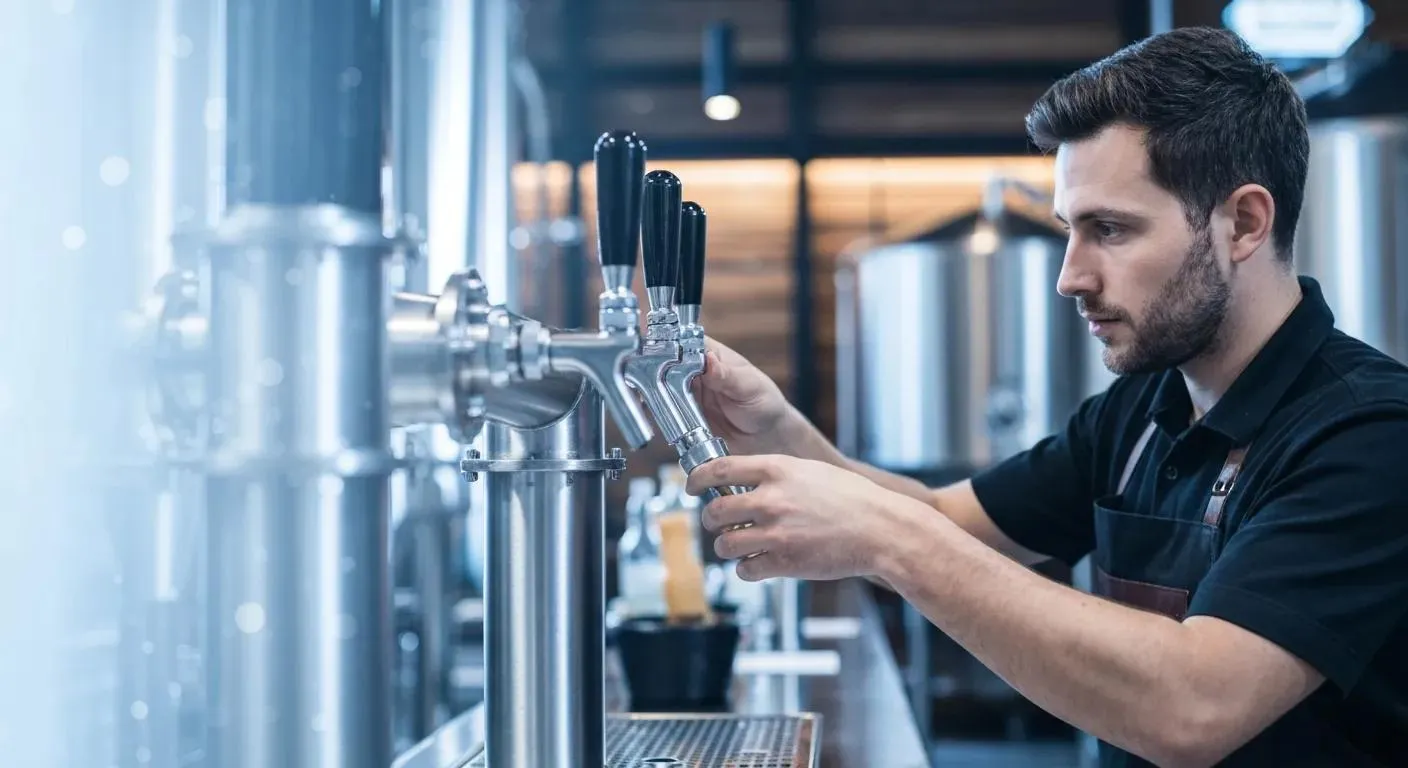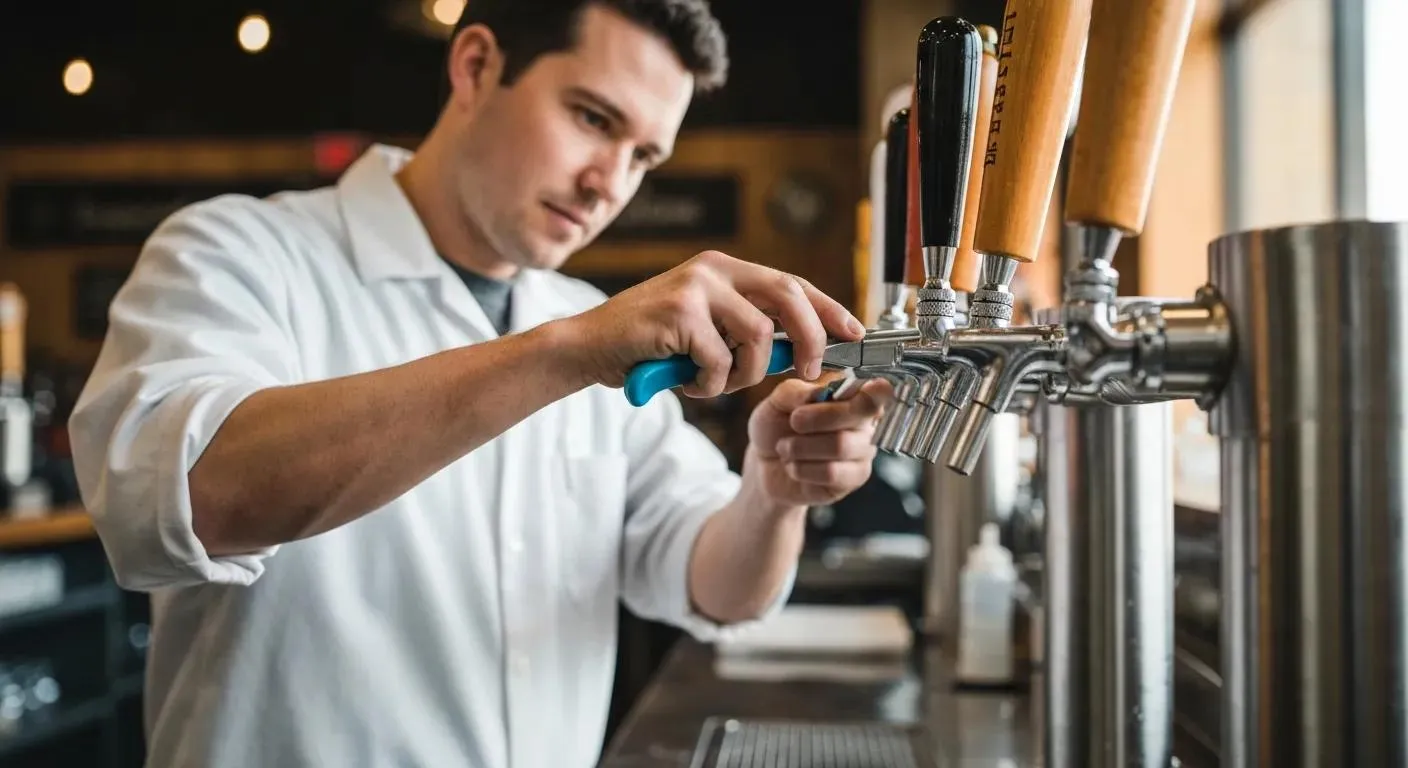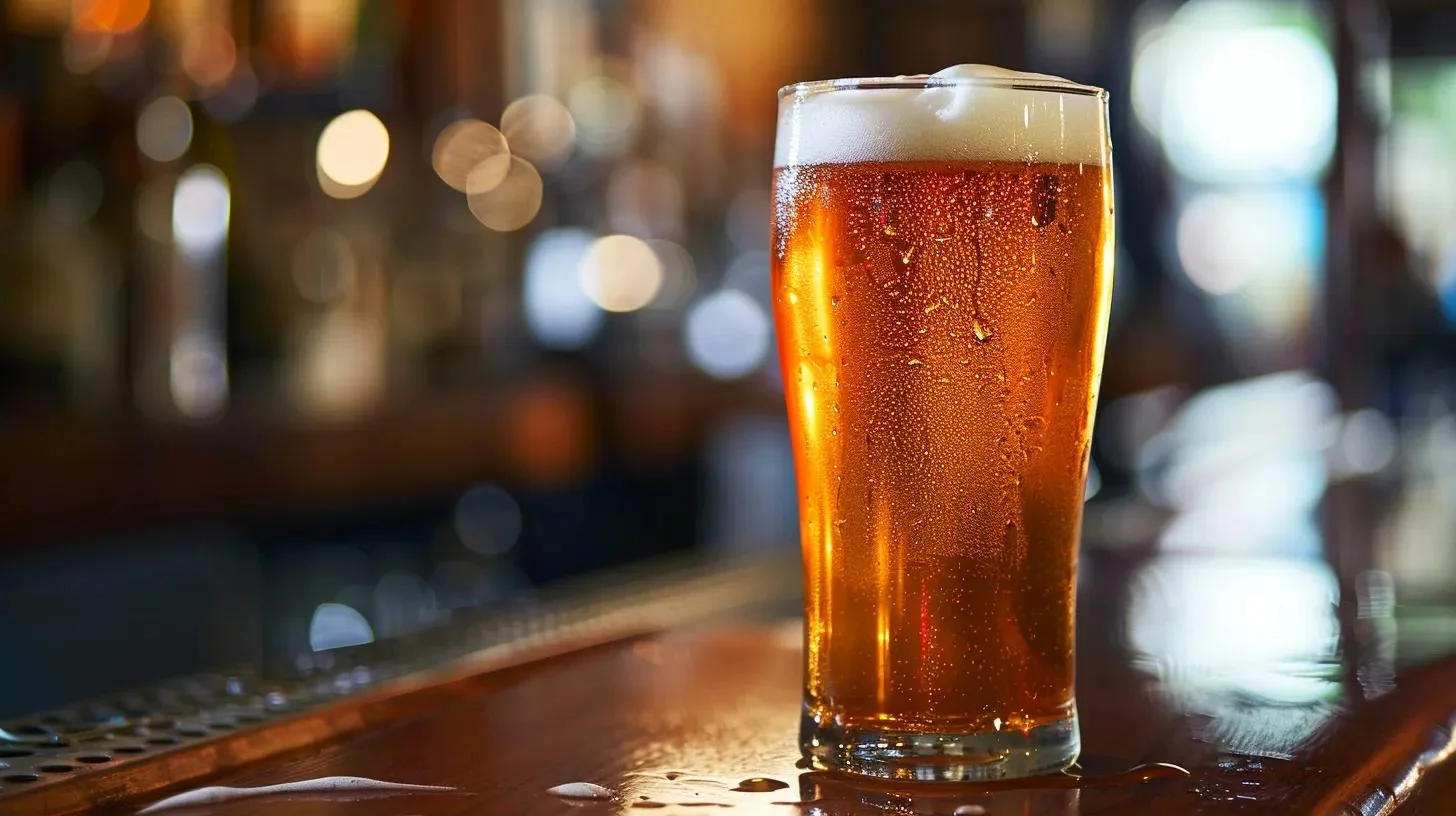Liquor on Tap Systems: Efficiency & Style

Liquor-on-tap systems represent a growing trend in the hospitality industry. They offer a unique way to serve a variety of alcoholic beverages. This method of dispensing beer, wine, and pre-mixed cocktails from a tap allows bars, restaurants, and other establishments to streamline their service and guarantee consistent quality.
The appeal of these systems lies in their ability to expedite the cocktail serving process. From a business standpoint, this translates into the potential for faster service and higher turnover. Customers enjoy the quick and consistent service provided by these systems, ensuring they receive their drinks quickly and with a uniform taste.
Investing in a liquor-on-tap system requires understanding the necessary equipment and installation procedures. It entails more than just taps and kegs; a proper system includes the correct mix of nitrogen or other carbonated or dioxide, precise regulator settings, and often a cooling system to maintain the optimal temperature and carbonation levels.

Key Takeaways
- Liquor-on-tap systems enhance efficiency and ensure drink consistency.
- Proper setup and maintenance are crucial for optimal system operation.
- These systems offer improved customer experience with quick service and quality beverages.
Basics of Liquor on Tap Systems
Liquor-on-draft systems provide an efficient method for dispensing spirits draft wine and mixed cocktails, employing a draft system traditionally seen with beer. These systems are integral to bars and restaurants looking to serve drinks quickly and consistently.
A notable example is 18 Taps Tavern, which uses liquor-on-tap systems to enhance service efficiency.
Overview of Draft Taps Systems
The primary function of a draft line or system in the context of dispensing liquor is to maintain the quality of the spirits while providing a fast and consistent pour. Draft systems use stainless steel lines that are easy to install, clean, and maintain, which is essential for the flavor integrity of various liquors and cocktails. Such systems usually involve refrigerated kegs and a gas component, such as nitrogen, to propel the liquor through the lines.
Understanding Kegs and Cornelius Kegs
Kegs are the containers that hold the liquor in a draft system. They come in various sizes, with a prevalent type being the Cornelius keg (often referred to as a "Corny" keg). Originally used to store sodas, Cornelius kegs are ideal for smaller batches of pre-mixed cocktails because of their manageable size and ease of use. Built from stainless steel, they are durable and preserve the cocktail's taste without any metallic tinge.

Components of a Draft Tower
The draft tower is the visible part of a draft system where the taps are located. It is a conduit that connects the whole keg and tap system to the faucet from which the liquor is dispensed. Inside this structure, you can find:
- Lines: Tubing made from durable materials like stainless steel that are impervious to the acidic components of mixed drinks.
- Couplers: Devices that attach to the keg, allowing it to connect to the lines.
- Faucets: The taps from which bartenders pour the drinks, specifically designed for a smooth flow and to prevent drips.

Equipment and Installation
When setting up a liquor on tap system, selecting the right equipment and understanding the installation process are critical steps. These ensure the efficient dispensing of beverages and maintain their optimal quality.
Selecting the Right Equipment
Selecting the appropriate equipment for an establishment with a liquor draft on-tap system is paramount. The centerpiece of this setup is the kegerator, which must accommodate the specific types of liquors and products being dispensed.
It's essential that the CO2 tank and nitrogen system are correctly sized to provide consistent pressure for dispensing cold and preserving the beverages. A high-quality stainless steel faucet is also a necessity for controlling the pour and preventing waste.
Installation Process
The installation process of a liquor-on-tap system must be executed with precision. It begins with securely positioning the kegerator in a location that allows for easy access and temperature control.
Following that, one must connect the CO2 tank and nitrogen lines to the kegerator, ensuring there are no leaks and the gases are at the correct pressure levels for the type of beverage. After ensuring all lines are clean and sanitized, they can be connected to the tap handle of the faucet where the final liquid product will be dispensed.
Beverage Variety and Quality
Offering a mix of draft beverages such as beer, wine, cocktails, and non-alcoholic options like kombucha can significantly enhance a venue or restaurant’s beverage program. Ensuring consistent quality across a variety of options is paramount. Venues like 18 Taps Tavern also enhance the social atmosphere with music alongside their diverse beverage offerings.
Serving Beer on Tap
Draft dispenser systems used for beer are designed to maintain the beverage’s optimal condition from keg to glass, ensuring the quality and consistency expected by consumers. Micro Matic’s beverage and dispensing system and technology optimize the pouring of beer, delivering the freshness and taste that aficionados appreciate. Complex flavors, aromatic hops, and the beer’s carbonation are preserved, replicating the brewmaster’s intended experience. Saturday is a popular day for special beer promotions and events at venues using draft systems.
Offering Wine on Tap
Wine on tap is an innovative approach that is growing in popularity. The traditional bottle service is replaced by a keg wine tap system, akin to beer taps, allowing for quicker service and maintained freshness. Serving wine in this manner reduces waste associated with packaging and spoilage. Additionally, the advantages of on-tap wine include precision control over serving size and temperature, ensuring each glass of wine is presented as the vintner intended.
Incorporating Cocktails and Kombucha to Enjoy
Cocktails on tap expedite service and ensure you enjoy a uniform taste in every glass. KegWorks emphasizes the appeal of both draft beer and cocktails, as they streamline the process and maintain drink consistency across bartenders. Photos of beautifully presented draft cocktails and kombucha are often shared on social media, enhancing the venue's appeal.
Similarly serving cocktails, kombucha on tap is a burgeoning trend for health-conscious consumers, providing fermented tea with its distinctive tang and probiotic benefits. To execute draft cocktails effectively, Micro Matic suggests considering dilution in recipes and proper line maintenance to prevent issues such as clogging.
Operation and Maintenance
Effective operation and maintenance of liquor-on-tap systems are crucial for ensuring consistent drink quality, quick service, low pressure, and minimal wastage. These systems require regular upkeep to prevent oxygen from spoiling the beverage and to maintain the integrity of the flavors. Customers seeking specific beverages or parts can rely on well-maintained liquor-on-tap systems to meet their needs.
Running a Smooth System
To expedite service and guarantee consistency, it's imperative that all components of a tap system—from kegs liquor taps to lines—are in prime condition. A well-maintained system serves drinks swiftly and maintains the beverage's characteristics, as exposure to oxygen is minimized. Businesses can achieve this by following a strict operational protocol and using properly calibrated equipment.
Cleaning and Maintenance
Regular cleaning and maintenance are non-negotiable to prevent waste and protect against the negative effects of oxygen on the product.
- Weekly Tasks:
- Clean all beer lines to prevent build-up that can impact taste and quality.
- Check couplers for wear and sanitize them to keep the system hygienic.
- Monthly Tasks:
- Inspect and clean faucets and tap nozzles where residue can accumulate.
- Review the gas system for consistent pressure levels, ensuring the proper pour.
When considering professional options for maintaining draft systems, GS Draft System Solutions offers full-service design, installation, and maintenance.
Training and Employment
In the fast-paced world of restaurant and bar management, efficient training and deployment of bartenders and other staff is pivotal. The introduction and use of liquor-on-tap systems have created a need for education tailored to these innovative setups, with a focus on operation and maintenance to ensure optimal service delivery. Local figures like Mike Storm often participate in training events and community engagement activities at venues using liquor-on-tap systems.

Educating Bar Staff
Educating bartenders on the nuances of liquor-on-tap systems is essential for smooth operations. This training encompasses everything from the mechanics of the systems to nuances in pouring and measuring.
Bartenders must become proficient in navigating POS (Point of Sale) systems, which are integrated with these tap systems to accurately track sales and manage inventory.
For example, the Tap Series® offers training programs that upskill bartenders to adeptly handle these technologically advanced systems.
Streamlining Bar Operations
The integration of liquor-on-tap systems with POS systems plays a crucial role in streamlining bar operations. It facilitates real-time tracking of sales transactions, inventory levels, and customer preferences, which enhances decision-making for bar managers.
Training in this context not only involves technical know-how but also imparts knowledge on leveraging this data to optimize workflows, save money, reduce waste, and improve overall service. This approach empowers bartenders, allowing them to focus more on customer service and less on manual inventory tasks.
Innovations in Liquor Dispensing
Recent advancements in ice and liquor dispensing technologies are transforming how beverages are served in bars and restaurants, focusing on efficiency and enhancing the customer experience.
Trending Liquor Dispensing Technologies
The modern landscape of liquor dispensing has seen the rise of intelligent taps and self-pour technologies, which are not limited to traditional draft systems. They come with novel functionalities like the Touchless Tap Key and seamless integration with mobile apps, allowing patrons to serve themselves.
Notably, there is an upsurge in the utilization of draft cocktails and batching methods. Draft cocktail systems are engineered to dispense pre-mixed drinks with consistency and speed. Batching, on the other hand, involves pre-mixing large quantities of cocktails for later dispensing, which streamlines service and also ensures consistency and uniform quality.
Customization and Personalization with Photos
Customization and personalization are at the heart of the marketing of modern dispensing systems. Consumers often desire a tailored experience, and establishments with the ability to offer a rich variety of beverages, including custom pour sizes, have an edge.
Specifically, wine dispensers and wine tap systems have evolved to provide not only a diverse selection of wines but also the convenience of dispensing wine by the glass. These systems ensure that every serving maintains the wine's distinct characteristics by preventing oxidation and minimizing air contact.
Liquor-on-tap systems have revolutionized the beverage industry. They provide a streamlined approach for bars and restaurants to serve cocktails and wine. These systems offer both consistency in taste and efficiency in service.
Cocktails are prepared in batches and dispensed from taps much like beer. This reduces the time customers wait to fill their cocktail orders.
Key Benefits:
- Speed: Serving takes a fraction of the time compared to traditional handcrafted cocktails. Some systems can make 5-7 cocktails per minute.
- Consistency: Every drink has the same flavor balance and alcohol content.
- Waste Reduction: Set ratios in the system to minimize the chance of over-pouring, thus reducing waste.
- Variety: With the right setup, a single system can serve a diverse range of cocktails.
Bars are also implementing self-pour technology. This allows the staff and patrons to serve themselves from the bartender or tap system, potentially increasing the establishment's sales.
Moreover, it's becoming common many bars to serve wine on tap. The benefits include reduced packaging waste and maintained wine quality compared to when individual bottles are used.
Implementing a tap system requires an initial investment and some understanding of the technical setup. This includes the nitrogen or carbon dioxide tanks necessary for operation. However, the return on investment can be significant due to the associated increase in efficiency and customer satisfaction.



